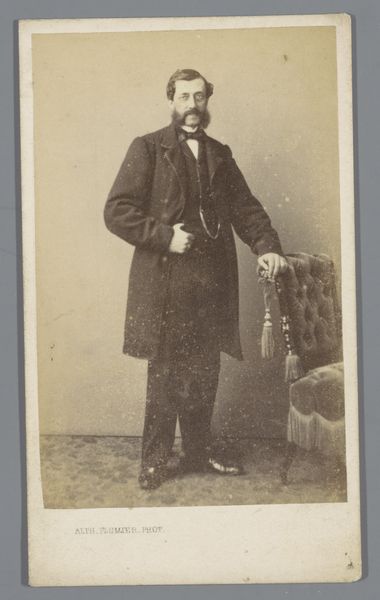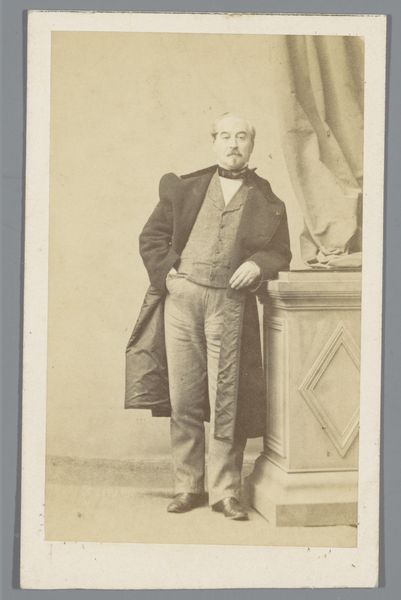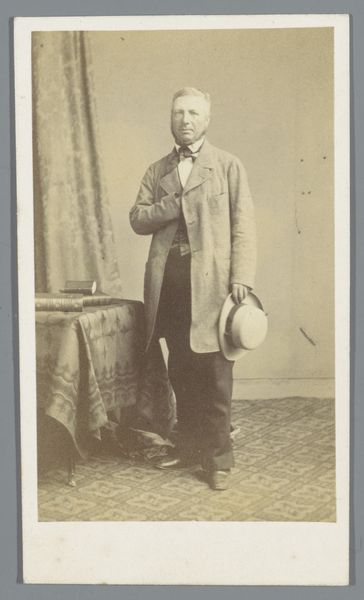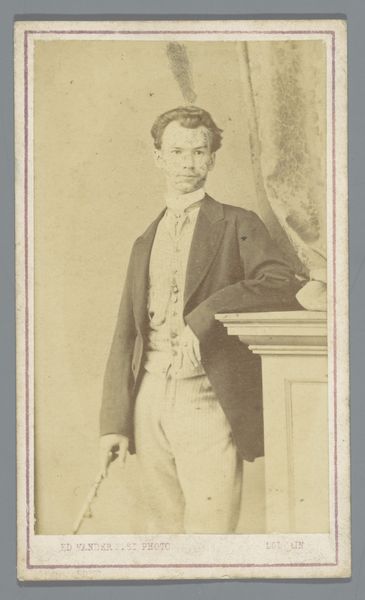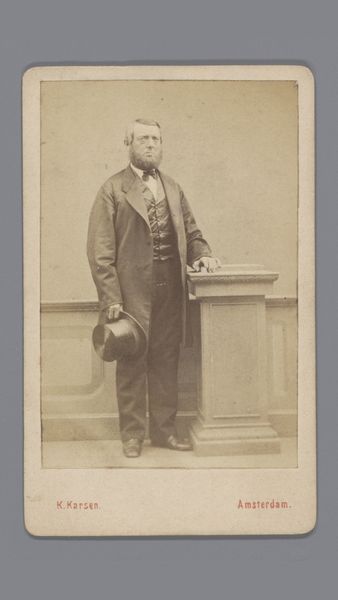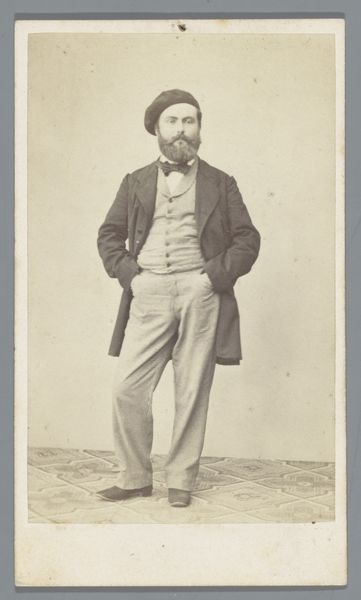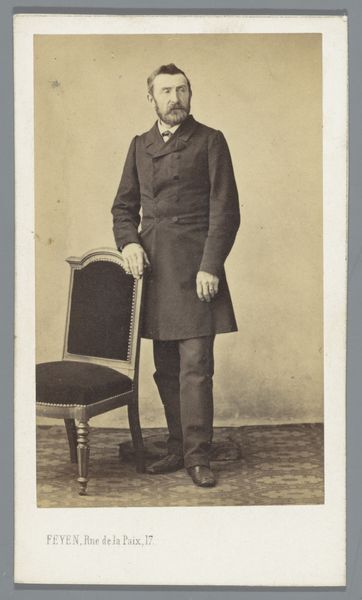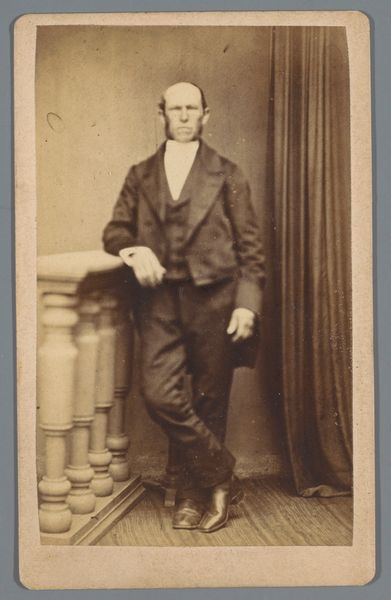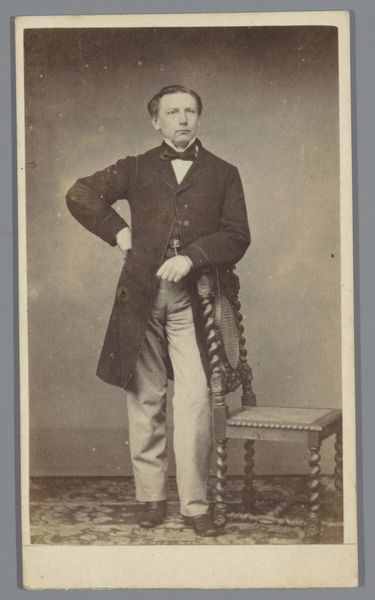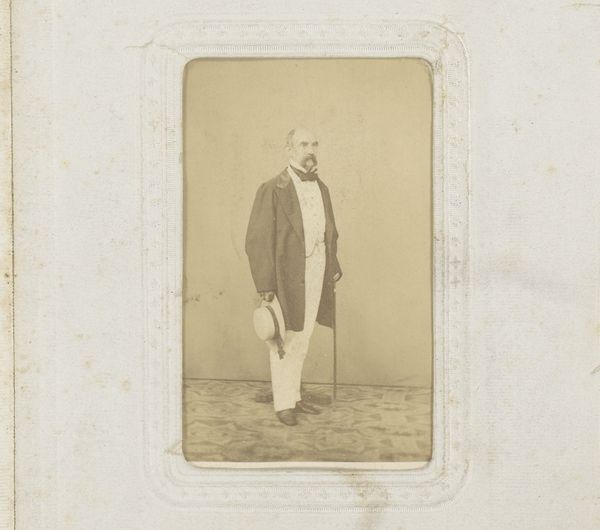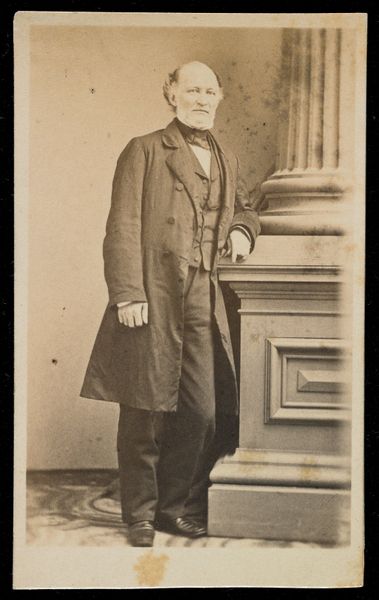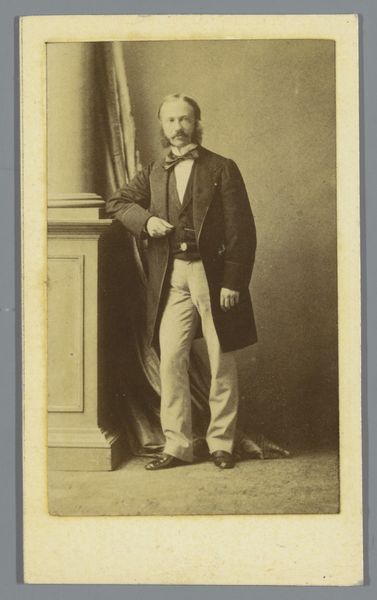
photography, albumen-print
#
portrait
#
photography
#
framed image
#
paper medium
#
albumen-print
#
realism
Dimensions: height 101 mm, width 60 mm
Copyright: Rijks Museum: Open Domain
Editor: So, this albumen print, titled "Portrait of an Unknown Man, referred to as Mr. Armengaud," was produced by Petit & Trinquart between 1858 and 1862. It has this really intriguing stillness to it. I’m curious, how do you interpret this work in terms of its historical context? Curator: Well, think about photography's role at this time. It's still quite new, and portraits like these democratized image-making. Previously, portraits were the domain of the wealthy, commissioned in paint. The rise of photography, however, meant middle-class individuals could now acquire images of themselves and their loved ones, a shift with profound social implications. Does this portrait strike you as particularly performative or candid? Editor: I think there is something performative. He poses with one hand in his pocket but at the same time it’s just so matter-of-fact. Curator: Exactly. Studios like Petit & Trinquart provided a service, creating a specific image of middle-class respectability. Notice the pose, the clothing, the setting – these all convey a certain social status. How does the anonymity of the sitter, “Mr. Armengaud”, affect your viewing experience, especially when considering the sitter may have had his picture taken for professional reasons or simply for personal documentation? Editor: It does make you think about who this was made for. Without a known name, the social information encoded in the picture kind of takes over. The picture's become representative of the time period rather than the individual, even if this was not what he hoped to accomplish with his picture. Curator: Precisely. Photography, especially portraiture, in this era served a crucial function in shaping social identities. Thinking about how this one photograph, mass-produced to convey professionalism and personhood to a wider audience in France at this time helps explain just how crucial portrait photography had become. It became democratized quickly.
Comments
No comments
Be the first to comment and join the conversation on the ultimate creative platform.
